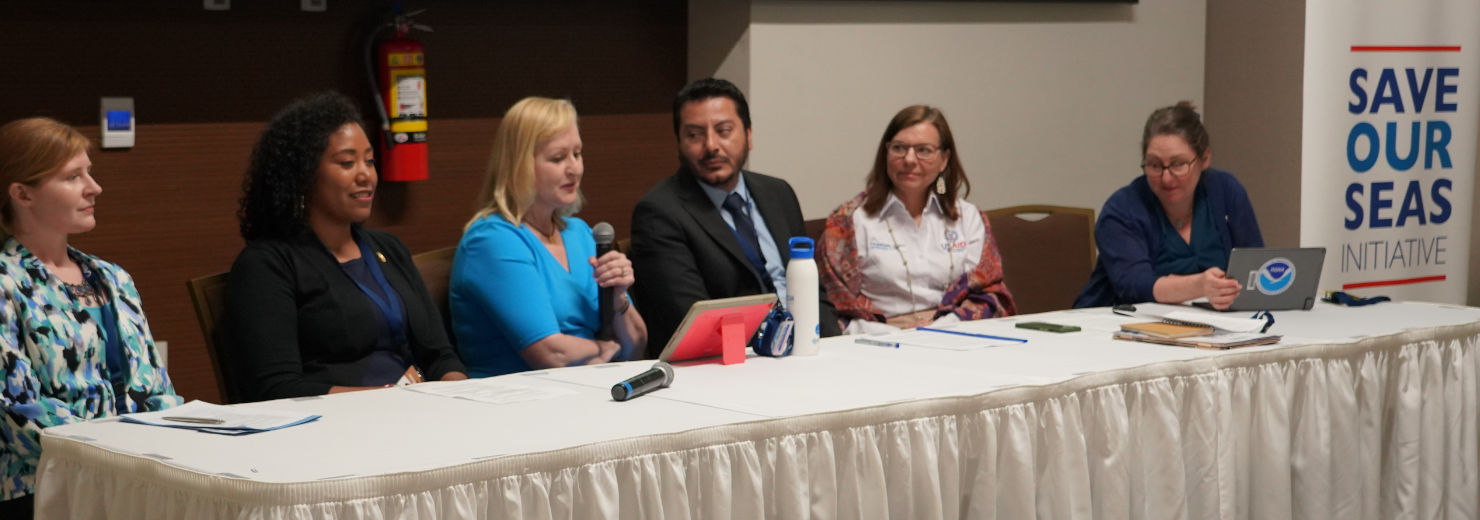Six takeaways from the Our Ocean Conference 2023
-

-
Chever Voltmer
-
March 27, 2023
-
4 min read

Chever Voltmer
March 27, 2023
4 min read


When packing for this year’s Our Ocean Conference in Panama, I grabbed a reusable water bottle from my very first Our Ocean Conference in 2016. This got me thinking about what has – and hasn’t – happened to keep plastic out of the ocean in the last seven years. With that in mind, here are my takeaways from this year’s conference:
- In historic terms, ocean plastic has risen quickly to the top of the global agenda. The first scientific paper to estimate plastic waste inputs from land into the ocean was published in 2015 and figured prominently at the 2016 conference. In contrast, a 2019 report published by the UN found that ocean plastic research (as measured by scientific papers published) grew faster than any of the other 55 development-related issues it tracks. That was certainly on view at this year’s conference.
- As a result, there is now a broad understanding that ocean plastic is a significant and growing problem. While raising awareness was a major focus for early Our Ocean conferences, it is no longer an issue today.
- Action to address ocean plastic is building momentum. Circulate Capital, the world’s first catalytic capital fund aimed at keeping plastic out of the ocean, was officially launched at the 2018 Our Ocean Conference in Indonesia – a major milestone at the time. This year, participants were buzzing about negotiations launched late last year to develop a binding international agreement on plastic pollution. It is great to see how far we’ve come, especially given the setbacks faced during global pandemic!
- While there is general consensus on what needs to be done, there is still a lot of work required to figure out how we achieve these goals. The consensus among participants is that we need to eliminate some plastics, reduce our use of others, adopt more reuse and refill models, significantly improve recycling, improve product design and delivery, and develop new sustainable materials as alternatives to plastics. However, a significant knowledge gap exists in understanding exactly how to implement concrete solutions in widely different locales. We are still at the beginning of this journey.
- Fortunately, there are many new voices bringing fresh ideas and energy into the space. I was struck by the number of people attending their very first Our Ocean Conference this year. It was also great to see more diversity in participants, especially partners from the region of Latin America. Every single one of these attendees makes a difference in our fight against ocean plastic. We need all of them.
- It is now clearer now more than ever that broad-based partnerships are key to solving the ocean plastic problem. The most interesting conversations I’ve heard this year were those that brought together very different stakeholders. The United States Agency for International Development’s (USAID) official side event, hosted alongside The Circulate Initiative, Ocean Conservancy, and Resilient Cities Network, was a great example. Speakers included Nicole LeBouef, Assistant Administrator of the National Ocean Service, longtime ocean champion Senator Sheldon Whitehouse, Clare Romanik, Senior Urban and Ocean Plastics Specialist at USAID, Gunther Merzthal, Chief of Staff at the Peruvian Ministry of Environment, Jannia Samuels, Deputy Director of Resilience for the City of Panama, Edith Cecchini, Director of International Plastics at Ocean Conservancy, and Peruvian Minister of the Environment Albina Ruiz. It was an honor for me to join this well-rounded line-up.
The Circulate Initiative made its global debut at the 2019 Our Ocean Conference in Norway. Since then, we have been working closely with partners around the world to identify and fill knowledge gaps, measure impact, and develop practical solutions to combat ocean plastic. We look forward to advancing circularity and sharing our insights at future Our Ocean conferences.